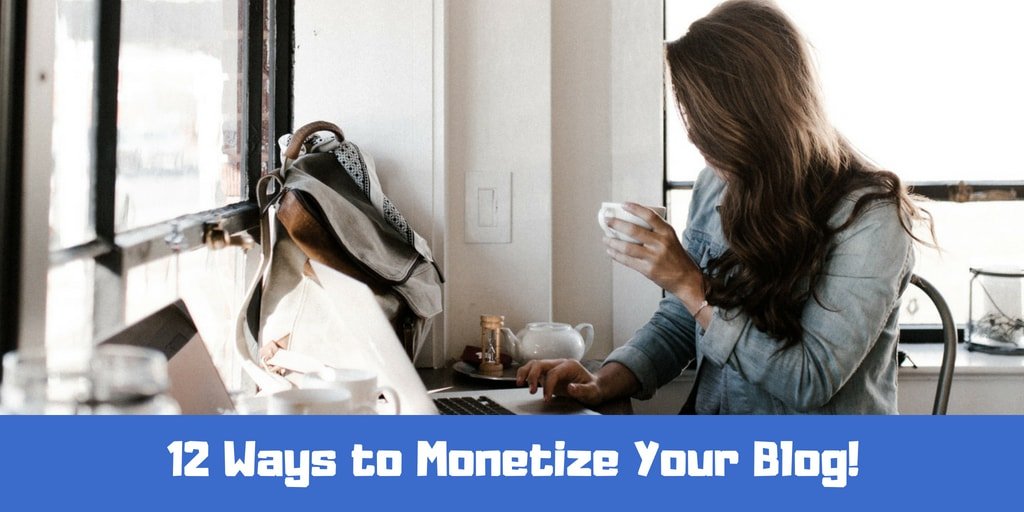Every Day You Don’t Start Your Blog, Someone Else Turns Your Idea Into Their Opportunity
Thousands of new blogs go live each day. The ones that publish and persist capture attention, build audiences, and collect the income you leave on the table by waiting.
Think about the last time you Googled a question and landed on a blog post. That blogger started and kept publishing. That’s why they own the traffic you want. That’s why they’re the ones gaining readers, subscribers, and ad revenue today.
Meanwhile, your best ideas are still sitting in a notes app. The fact is, the blog you’ve been dreaming about will belong to someone else unless you start it first.
And here’s the good news: the starter’s window is still open.
Blogging is still the simplest way to build a digital presence that pays you back. Unlike social platforms, a blog is yours—your domain, your list, your rules. No algorithm can snatch that away.
For this guide, we’re focusing on using Hosted/Managed WordPress to start a blog because it’s the fastest and simplest way to start. You don’t need hosting, you don’t need tech skills, and you don’t need weeks of setup. In just a few minutes, most people can have a blog live that looks professional and ready to grow.
WordPress removes the roadblocks that stop beginners from ever hitting “publish.”
Stop Overthinking
Most people get stuck at the same point: thinking about it.
They research. Compare platforms. Wait for the “perfect” idea.
And while they hesitate, someone less prepared hits publish and pulls ahead.
Momentum starts when you do. Once you’re live, you can improve, test, and grow. But until you press “publish,” nothing happens.
WordPress makes that leap easy. If you can post on social media, you can set up a clean, professional blog in minutes. You’ll plant your flag in a space you control—ready to grow and ready to earn. Start your blog now and claim your spot online.
A solid blog will:
- Turn traffic into income (ads, affiliates, etc)
- Sell what you create (products, services, coaching, etc.)
- Establish authority in your niche
- Give you location and schedule freedom
You don’t need a budget. For about $10 to $30 a month, you’re building an asset designed to pay you back. It’s one of the lowest-cost ways to start a real business.
You’re Three Moves Away From Your First Published Post
Just make yourself a quick promise: “I won’t quit.”
Because success is about not quitting. When a post misses, you pivot; you don’t stop. When a niche feels off, you adjust; you don’t abandon.
It’s a process, and it’s not overnight. Commit to 90 days of daily publishing and improvement. That single decision beats any hack, because the only way to truly fail at blogging is to quit.
- What to Expect in the First 90 Days: Slow, then momentum. Early wins aren’t giant paydays; they’re leading indicators like search impressions up, your first comments, first email signups, and first affiliate clicks. Stack those signals, and income follows. The first 90 days build your foundation; the next 90 start compounding.
- The 100-Post Rule: Don’t judge your blog until you’ve published 100 helpful posts. That threshold forces clarity, consistency, and real data. By post 100, you’ll know what ranks, what gets shared, and what to double down on. Until then, your job is simple—publish and improve. Pivot, don’t pause.
- Be Clear On What You Want: People don’t start blogs because they need a website. They start because they want freedom—to ditch the 9 to 5, make money on their terms, and stop worrying about paying bills. Keep your “why” front and center and pair it with work. Your want fuels the work; the work creates the win.
Let’s Start That Blog
1. Claim Your Name and Space
Every blog starts with a domain, which is the address people type to find you. Think of it like buying the lot before building the house. If you wait, someone else can snag the name you want.
Choose something short, memorable, and relevant to your niche. If your first choice is taken, add a clean modifier like get, try, HQ, lab, etc. With Hosted WordPress, just search for your idea, secure the domain name, and choose a plan so your blog looks professional from day one.
2. Choose Your Theme and Add Essentials
You don’t need coding knowledge or a designer. Pick a clean theme, add your logo and/or name, set your colors, and preview on mobile. Then add the essentials so visitors trust you. For example, an About page, a Contact page, and a Privacy/Disclosure page.
You can also add small trust signals that show readers you’re real, such as a clear headshot, biography, and links to your main social media profiles. Even a short tagline that tells visitors what your blog is about can strengthen trust.
These touches also make your site feel human and help new visitors remember you. Also, your theme isn’t just about looks; it sets the tone and feel. Readers should “get it” in five seconds or less.
3. Publish and Build
Start with a handful of in-depth posts. These should be useful, evergreen pieces that answer real questions in your niche. Link your posts to each other so readers keep moving through your site.
Use keyword research tools if you have them, but you can also find great ideas by scanning Reddit, Quora, or comment sections to see what people are actually interested in. Turn those insights into new posts. Every article you publish builds authority and gives people more ways to find you.
4. Set Up Monetization
Once your blog is live and you have some content, monetization becomes straightforward. You have various choices, but these three are the most common.
- Affiliate Recommendations: Link to products you genuinely use or endorse and include a short disclosure. Get paid by the brands when someone signs up using your link. Some marketplaces include Impact, Awin, and CJ Affiliate.
- Ads: Sign up for an Ad Network like Google Adsense and turn your traffic into passive ad revenue.
- Your Offers: Use your blog to sell digital products, services, coaching, etc. Your content attracts visitors and builds the trust that drives sales.
Monetization takes time. Most blogs don’t earn in the first few months. The key is consistency: publishing, improving, and learning what your audience wants. Keep at it, and the results start compounding faster than you expect. Start your blog today. Lock your domain, pick your look, and publish your first post before the day ends.
Paying Beats “Free” Blogging
You might be thinking, Why pay at all? Can’t I just start on a free platform? You can, but “free” often costs you the things that matter most.
Ownership & Credibility
On free platforms, your address usually looks like yourname.otherplatform.com. It signals “hobby,” not “business.” But things change when you get your own domain name.
That tiny difference changes how readers perceive you, how partners approach you, and how confident you feel sending your link.
Monetization Without Handcuffs
Free tools come with limits, such as restricted features, fewer layout controls, and sometimes barriers to using ads or affiliate links the way you want.
Paid blogging platforms are built for growth. As your traffic climbs, you can turn on monetization options and structure posts for revenue without wrestling with a pile of workarounds.
Professional Design Without the Price Tag
As noted earlier, you don’t need a developer to look polished. Choose a clean theme, customize your colors and typography, and you’ll go live with a site that looks like it cost thousands.
Readers judge a site in seconds; give them a layout that earns trust at first glance.
Security and Maintenance Handled
Free often means “you’re on your own.” Paid blogging platforms manage hosting, performance, and security in the background. No server patching. No plugin panic.
You focus on creating; they handle the boring-but-critical tasks that keep your site up and running.
Room to Grow Beyond a Blog
What starts as a simple blog can quickly become a media brand, a membership site, or even a software product. Paid blogging platforms often scale with you, so you won’t outgrow the solution the moment your content takes off or you change direction. Start your blog today.
Silence The Doubts Holding You Back
“The internet is already too crowded.”
Crowded simply means there’s demand. Most blogs disappear because their owners stop publishing. Post weekly, answer real questions, and you’ll carve out space—especially when you own your domain and present like a pro.
“I don’t have time.”
Just 1 to 2 hours a day moves you forward. You can even batch, such as ideas on Mondays, writing on Wednesdays, and publishing on Fridays. Your blog compounds: each post keeps working while you live your life.
“I can’t afford it.”
Launching your blog costs about what you’d spend on a few sodas each month. That small expense buys you ownership, credibility, and the ability to monetize. If you want an online business, this is the lowest barrier you’ll find.
“What if I fail?”
What if you succeed? The truth is, failure doesn’t happen when something doesn’t work. It happens when you quit.
Every successful blogger stumbled, published posts that flopped, or picked the wrong niche at first. The difference between them and others is that they didn’t stop. They adjusted and kept publishing until they found traction.
Start your momentum: Publish three helpful posts. Share them. Learn which one resonates, then do more of that. Failure is temporary. Regret hangs around.
Proof It Works: 3 Bloggers Who Turned Posts Into Dollars
Your starter’s window is open right now, but it won’t stay that way forever. The longer you delay, the more crowded your niche becomes and the more readers you surrender to someone else. The sooner you start, the sooner you can be discovered, shared, and paid.
John Lee Dumas Publishes Like Clockwork and Profits Massively
Entrepreneurs On Fire (EOFire) still posts transparent, line-item income reports. The 2024 totals were $1,692,264 gross and $1,538,515 net, with top revenue streams from sponsorships, online courses, affiliates, and books. That’s the compounding power of consistent publishing and owned offers.
Since its launch in 2012, EOFire has reported $27.89 million gross and $21.98 million net. Proof that rhythm and focus scales.
Pat Flynn Turned a Small Niche Site Into a Seven-Figure Year
Pat runs Smart Passive Income. He began by publishing helpful tutorials and honest income reports. A few years in, he launched his own courses and, in one year, reported over $1 million in earnings from those launches.
That’s the power of owning your platform and stacking offers over time.
Michelle Schroeder-Gardner Blogged Her Way to $4M+ Over Five Years
Michelle started blogging in 2011, focused on personal finance content that readers actually searched for. Then, she layered on affiliates, ads, and her own course. By 2017, she hit $1.19M in revenue. Over the following five years, her business generated more than $4 million.
Different niches follow the same pattern: start, ship weekly, build your list, add offers you believe in. That’s how blogs become businesses.
Your Move
You can close this page and go back to “thinking about it.” Or you can do the simplest, smartest thing an aspiring creator can do: claim your domain, launch your site, and publish your first post. Don’t overcomplicate it. Action beats anxiety. Start your blog today and begin building an income-generating asset you control.
The only real difference between bloggers who earn and those who don’t is that the former started.
BONUS: What to Think About by Niche (How to Start a Blog)
Travel Blog
If you’re into travel, start with the promise you want to deliver, such as budget adventures, luxury escapes, solo female travel, or family trips. Pick one audience and one angle so every post feels made for them.
Then choose 5 to 7 “pillar destinations” you can cover deeply this year. Depth beats scatter. For example, one city guide with neighborhoods, costs, mistakes to avoid, and a 3- or 7-day itinerary will outperform ten thin posts.
Publish content that travelers actually search for. For instance, destination guides with clear checklists and transport how-tos. You can use repeatable templates for trip reports to keep creation fast and the experience consistent.
Original photos matter, too. You can shoot your own, add map embeds, and include short clips if you have them. Also, monetize without breaking trust. For example, share affiliate links to gear you use, booking tools you’ve tried, and travel insurance you stand behind. Add a simple lead magnet like “3-Day Paris Trip For $300” or “Carry-On-Only Packing List,” to start building your email list.
Email turns one-time readers into repeat visitors when you release new content regularly. Consider organizing your site by region and trip type, add a “Start Here” page, and link posts together so readers keep clicking.
Lifestyle Blog
Lifestyle works when you limit the scope. Choose 2 to 3 pillars that fit your lived experience, like home, wellness, money, minimalism, small-space living, and routines. Define who you’re talking to, such as busy parents in apartments, young professionals in shared spaces, or empty nesters simplifying. Your angle is the filter that decides what not to publish.
Ship useful playbooks, not diaries. For example, “30-Minute Declutter Plan,” “Sunday Reset Routine,” “$50 Grocery Makeover,” “Small-Space Workout Circuit.” Each post should help the reader do, decide, or avoid something today. Interlink posts into mini-series so readers binge your content.
Monetize by aligning offers with pillars such as storage solutions, planners, routine trackers, and small-space furniture. Recommend what you genuinely use and explain why it solves the problem. As your email list grows, layer in low-ticket digital products and then add higher-ticket options.
Keep design calm and scannable; clarity converts better than aesthetics in this niche.
Recipe Blog
A recipe blog thrives on trust and repetition. Readers come back when your recipes work every time.
You can standardize your content structure so readers know what to expect. And include a short intro that promises the outcome (e.g., “soft, bakery-style cookies in 30 minutes”). That explains why people should try it.
Also, think in clusters rather than one-off posts. For example, if you share a “Master Muffin Batter,” it can branch into blueberry, banana-nut, and lemon-poppy variations. Technique posts such as “How to Bloom Gelatin” or “Why Resting Dough Matters” give your blog evergreen authority and attract natural links from other sites.
For monetization, you can earn from affiliate links to ingredients or kitchen tools. Just keep it honest and relevant. As your traffic grows, adding ads or partnering with a few brands can become another layer of income.
The aim of a recipe blog is to become someone’s go-to cookbook on the web.
Writing Blog
Before you publish, it helps to decide who you’re writing for and what you want them to achieve. For instance, you can focus on aspiring novelists finishing a draft, freelance writers landing clients, or journalers building a daily habit.
To keep output steady, you can use a repeatable post format. For example, a quick hook, one clear concept, a short example, an exercise the reader can do in ten minutes, and a next step. For discovery, cover questions people actually search for and answer with concrete samples, not theory.
If you want to grow an email list, offer a small, useful freebie matched to your lane, such as ten pitch scripts. Monetization can start with your own digital kits or critiques, then expand to courses and carefully chosen tool affiliates you actually use or endorse.
Fashion Blog
First, decide on the angle and audience. For example, petite workwear under a budget, sustainable basics, plus-size capsule wardrobes, or thrift flips. Your angle influences photography, shopping links, and how you speak to fit and comfort.
To keep creation simple, you can build content types that are repeatable. If you plan to monetize, you can link to exact items when available and provide similar options when they sell out. Some creators add a “Shop My Closet” page organized by category and price, plus a short quiz that emails a mini-capsule PDF to grow the list.
Share things that work in real life, not just in photos.
Fitness Blog
Clarify what kind of results you want to help readers achieve. For example, you can focus on at-home workouts, beginner strength training, or postpartum recovery.
You can build your content around three main pillars: workout programs, how-to form guides, and habit tools. For example, share a 4-week starter plan, short form videos that teach safe movement, or printable habit trackers that help readers stay consistent.
Your tone should be encouraging, not drill-sergeant; people want a coach they trust. And if you record demos, use bright lighting and clear angles. Show modifications for beginners and mention when to avoid certain moves. You can also title posts like a searcher would search—“3-Day Beginner Dumbbell Workout (No Jumping)” or “Mobility Routine for Tight Hips.”
As your audience grows, you might offer optional resources such as affiliate links to gear you personally use, low-cost digital workout calendars, or group challenges. Think of your site as an approachable gym people can visit anytime, with a friendly guide who meets them where they are.
For your email list, a simple freebie can help grow it fast. But it’s also important to tell people what to expect if they join, such as weekly training tips or routines.
Photography Blog
A good photography blog helps readers see improvement. You can specialize in portraits, landscapes, products, or street photography, depending on what you shoot and enjoy teaching.
Your posts can mix storytelling with instruction. For example, “How I Shot This Portrait with Natural Window Light,” or “Three Lessons from a Rainy City Shoot.” Showing behind-the-scenes details turns your work into a learning moment.
You can grow your email lists by offering downloadable resources. And as your traffic grows, monetization can include affiliate links for gear, mini courses, or local workshops. You can organize the blog by genre, camera brand, or location.
Add a clear “Start Here” page like “New to portraits? Begin with these three posts.” The overall goal is clarity—help readers understand settings, replicate results, and gain confidence with every photo they take.
Book Blog
If you’re drawn to books, decide what kind of reader you want to serve. For instance, you can focus on a single genre (like cozy mysteries and dark fantasy) or a reading goal (like self-improvement, leadership, and entrepreneurship). This affects how you organize and promote your content.
You can set a clear tagline that tells people exactly what your blog delivers—something like Helping You Find Your Next Favorite Cozy Mystery. When writing posts, think variety: not just reviews, but also lists, reading guides, recommendations, etc. Topics like “Best Books for a Weekend Escape” or “10 Fantasy Series Worth the Hype” are good examples.
Organize your posts into hub pages by genre or author so readers can browse easily. Some bloggers include a “How I Review” page to explain their rating system and earn trust. As for your email list, you can offer a bonus for signing up—something useful, like “Get My Entrepreneur Must-Reads When You Subscribe.”
Monetization can be subtle, such as affiliate links to multiple retailers and low-cost digital offers. In this niche, the goal isn’t just to share opinions, but to help readers find their next favorite book faster.
Sports Blog
A sports blog thrives on passion and consistency. You can pick a focus such as covering a single team, analyzing a league, explaining stats to casual fans, or coaching youth athletes.
If you follow a local team, add personality through photos from games or player interviews. During the off-season, you could publish draft analyses, scouting reports, or “state of the team” updates to keep traffic steady.
To build a community, consider offering a weekly email digest (like fixtures, three key takeaways, or a short opinion piece). Over time, that list can support a paid membership or ad-supported newsletter. Monetization can also include affiliate links for team gear, tickets, or streaming subscriptions.
Local sponsors, like gyms or sports bars, may partner with you if your coverage feels authentic and community-driven. The heart of it all is trust: be consistent, fair, and passionate.
Personal Blog
A personal blog works best when it’s about more than your story. It also has to be about what readers can take from it.
Share your experiences, but frame each post around a takeaway. Instead of just describing what happened, you might say, “Here’s what I learned, and here’s how you can apply it.” That shift from diary to guide makes your writing relatable and valuable.
You can choose a few recurring themes and build a series that tracks progress over time, like “From Burnout to Balance,” “Freelance Life in 90 Days,” or “My Year of Minimalism.” Series help readers follow along and see growth.
To keep your voice authentic, set boundaries early on about what you will and won’t share. That makes it easier to post regularly without feeling exposed. For your email list, you can offer a small freebie that aligns with your theme, like a budgeting worksheet, a daily reflection journal, or a goal-tracking template.
As your community grows, monetization can happen through tips (e.g., “Buy [Name] a Coffee”), templates, coaching calls, or small digital guides. Keep your design simple and your writing conversational.
The goal is connection, not perfection. People want to feel like they’re learning from a real person who’s been there.
Business Blog (for companies)
The main purpose of a business blog is to educate and earn trust before the sale. Start by defining your ideal customer profile (ICP): Who they are, what problem they’re trying to solve, and what words they use to search for it.
Then organize your content around three core areas: problem explainers, comparisons, and proof. For example, you might write “How Missed Follow-Ups Cost Sales Teams Millions” (problem), “Your CRM vs. Spreadsheets: Which Is Really Easier?” (comparison), and “How We Helped a Team Double Response Rates” (proof).
Each post should point to a logical next step, such as booking a consultation, watching a demo, or downloading a checklist. Avoid generic calls to action; tailor them to the reader’s stage of awareness.
You can also repurpose your strongest posts into LinkedIn articles or newsletters for extra reach. And as your traffic grows, use retargeting ads or drip emails to move leads through your funnel. Internally, track revenue-based metrics like qualified leads and conversions rather than just page views.
Blogging for business is a long game, but every helpful post shortens the sales cycle by attracting prospects and building trust.
FAQ
Yes, through several streams: display ads (paid per view/click), affiliate links (commissions on referred sales), sponsored posts, and selling your own offers (digital products, courses, coaching, services). Set a publishing schedule, track what gets traffic, and double down on content that converts.
Yes, you can start free to practice, but know the tradeoffs: a platform subdomain, limited control, and tighter monetization rules. If you’re serious about income, get your own domain and a paid plan so you look credible, control your design, and can monetize cleanly. But if you must, start for free, and then upgrade as soon as you can.
Do: publish consistently, answer specific search questions, use clear headlines, interlink related posts, and build an email list from day one. Keep posts scannable, disclose affiliates, and measure what matters (search clicks, conversions). Then make more of what works. Don’t: chase perfection, copy others, stuff keywords, or rely only on social media platforms.
Keep it simple: pick a niche you can write about weekly, claim a short domain, choose a clean theme, and publish your first “how to” or “best of” post that solves a real problem. Add About/Contact/Disclosure pages for trust, interlink related posts, and place one relevant affiliate recommendation per post. Aim for one quality post per week for 12 weeks. Momentum is key.
It costs just a few dollars a week or about $10 – $30 per month. That covers your domain name, a clean theme, and the ability to monetize.
Create Your Blog

I’m a freelance copywriter and SEO specialist. I aim to empower individuals and businesses with impactful marketing solutions and insights. In my downtime, I recharge by embracing the beauty of nature or cherishing moments with my loved ones. If you found value in this post, please consider sharing it.
Want a heads-up once a week whenever a new article drops?




![30 Business Ideas to Make Money in [year] (Only the Best) Business ideas article quote.](https://techhelp.ca/wp-content/uploads/2021/08/business-ideas-300x150.jpg)


